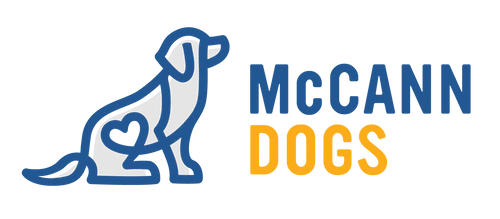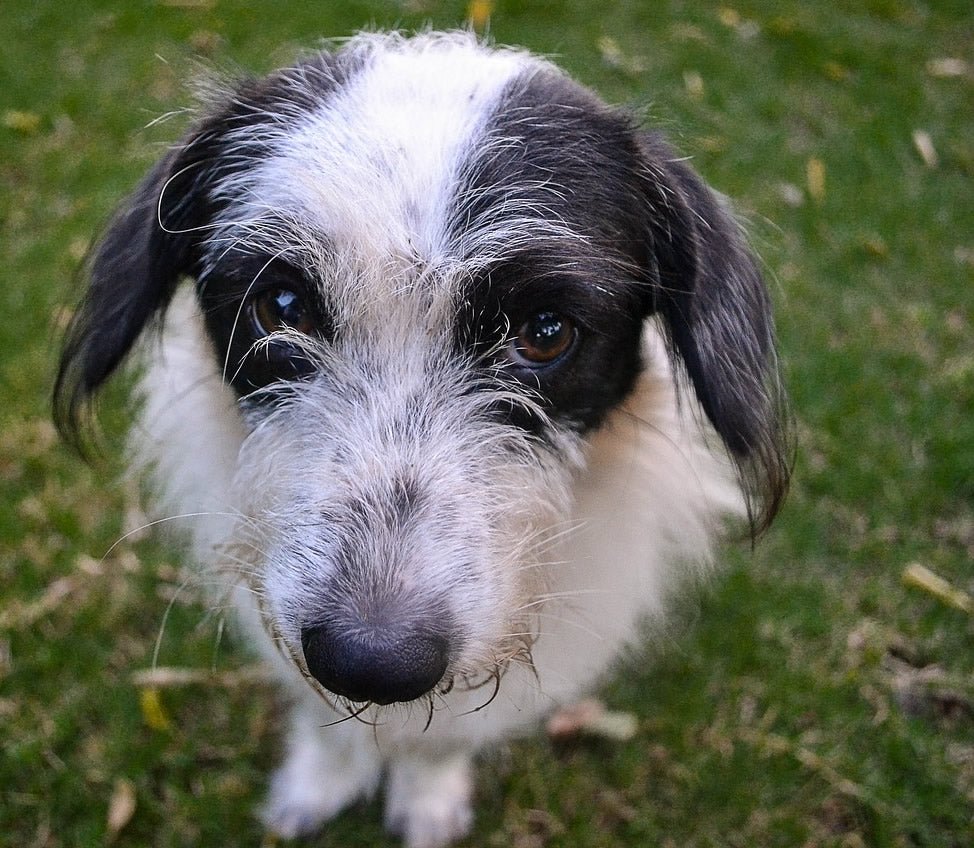We have an expression in dog training: "he's under thumb." A dog who is "under thumb," refers a dog who is only well behaved when he has no other option. One who only makes good choices due to the threat of correction.
This is a dog who has been trained using a reactive approach. This dog, while under the control of his handler, usually appears obedient and well trained. Watch this same dog when the thumb is lifted, and he's likely to make very different choices.
Reactive Dog Training
Dogs are not vindictive. They don't sit around plotting choices. They don't lay in wait hoping they'll have the opportunity to be bad. Dogs do what is rewarding! They rely on a history of reinforcement to make choices. When there are grey areas, or no clear value established by us, they will revert to the things that have proven to be self-rewarding in the past.
Let's take the example of jumping on guests. Today we look at Spot. Spot, is a happy lab. He loves people and is always eager to greet them. As soon as he sees a person, new to him or not, he jumps on them in an eager attempt to greet and make friends. Spot is not a bad dog, he's just not clear on the rules. His handler, Joe, decides that he's going to train Spot out of the bad habit of jumping up. He puts on his leash and every time Spot jumps on someone, he uses a correction to teach Spot. Spot learns quickly that jumping up on someone is unpleasant. He's a smart dog and it only takes a couple of repetitions for Spot make better choices while on leash. Joe pats himself on the back and moves on with his day.
The next day, a friend named Jill comes over. Spot is excited and jumps up on Jill. Joe gets his leash, puts it on and corrects Spot again. This time, he only has to correct once and Spot remembers that it is not fun to jump up. Great - Joe pats himself on the back again thinking how proud he is that his plan is working. Spot starts to make better choices when he's on leash and "under thumb." When Joe is out walking Spot, he rarely jumps on anyone anymore, but the problem is when he's off leash, when the thumb is lifted. After more than 2 weeks of the same formula: Spot jumps up, Joe corrects, Spot stops jumping - Joe is starting to wonder why he's not making more progress. Spot has learned that he shouldn't jump up while he's on leash, but when he's off leash, he's still a jumping menace. Worse, he's now becoming hard to catch when Joe tries to put on the leash to correct Spot. He's become leash-wise. Spot knows when the threat of correction is real and when he can let go of any self control and let the self-rewarding behaviour of jumping up take over.
This scenario is very real. We hear these stories all of the time. Can you guess what is missing in the equation? Spot has been taught that when he is on leash, it'a unpleasant to jump up... but that's all he's learned!
Proactive Dog Training
Now for another approach. Meet Phil and Barker. Barker is also a happy lab. He loves people and is always eager to greet them. As soon as he sees a person, new to him or not, he jumps on them in an eager attempt to greet and make friends. Barker is not a bad dog, he's just not clear on the rules. His handler, Phil, decides that he's going to train Barker out of the bad habit of jumping up. As you see, Phil has the same problem as Joe, but he fixes it differently. He puts on a leash so he can keep control of Barker and he works hard on teaching Barker to sit in the face of distractions. He uses a variety of rewards to build value for Barker holding a sit. When Barker meets new people, Phil tells them that he's in training and learning good manners and requests that they only interact with Barker when he's sitting. He uses his well-taught sit skill to make sure Barker is doing something that is contrary to jumping up. It's not always easy for Barker as he's trying to fight with the self-reward of jumping up, but Phil is patient and builds distance as he needs to. Once Barker is sitting, he gets to greet the stranger and he gets lots of his favourite treats for holding the sit.
After a few days, Phil notices that as Barker sees people approach, he starts to sit in anticipation of all the great rewards he's now associated with sitting. He knows that in order to get the reward of greeting, he has to sit first. Phil gives himself a pat on the back and begins to vary his feeding schedule to wean away from the food rewards.
So, what is the big difference between Spot and Barker? Barker has been taught to make a choice. If he makes the right choice, he gets reinforced in multiple ways. He is not given the opportunity to continue rehearsing the wrong way. Good dog training can't ever be about correction alone. Being reactive to a problem won't solve that problem. There has to be concrete information on both sides of the coin. There is a consequence for Spot of a leash correction when he jumps up. There is also a consequence for Barker when he makes the wrong choice - he doesn't get the very thing he wants - he doesn't get to greet his new friend. In addition, if he's allowed a chance to make a choice based on a history of reinforcement, rather than just a set up to fail, he quickly starts to make the right one. Because Barker has been taught what he SHOULD do, rather than just what he shouldn't, he's not reliant on being under thumb. Spot, on the other hand, will always have to be under thumb to make the right choice. He's only learned what NOT to do within the limited context of being on leash. He's never been given the opportunity to make a good choice on his own.
When you are approaching a training problem, consider the whole picture. Yes, we want our dogs to know what they can't do, but we need to take the time to make sure they understand what they CAN do. With good planning and concrete expectations, we can retire the expression "under thumb" and let our dogs do their own thinking. Dogs are honest creatures - they will make good choices if we set them up to do so.
Happy Training!

